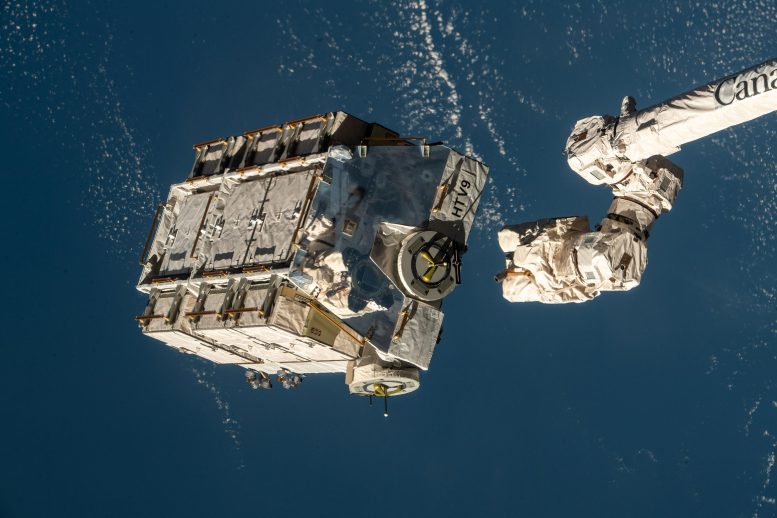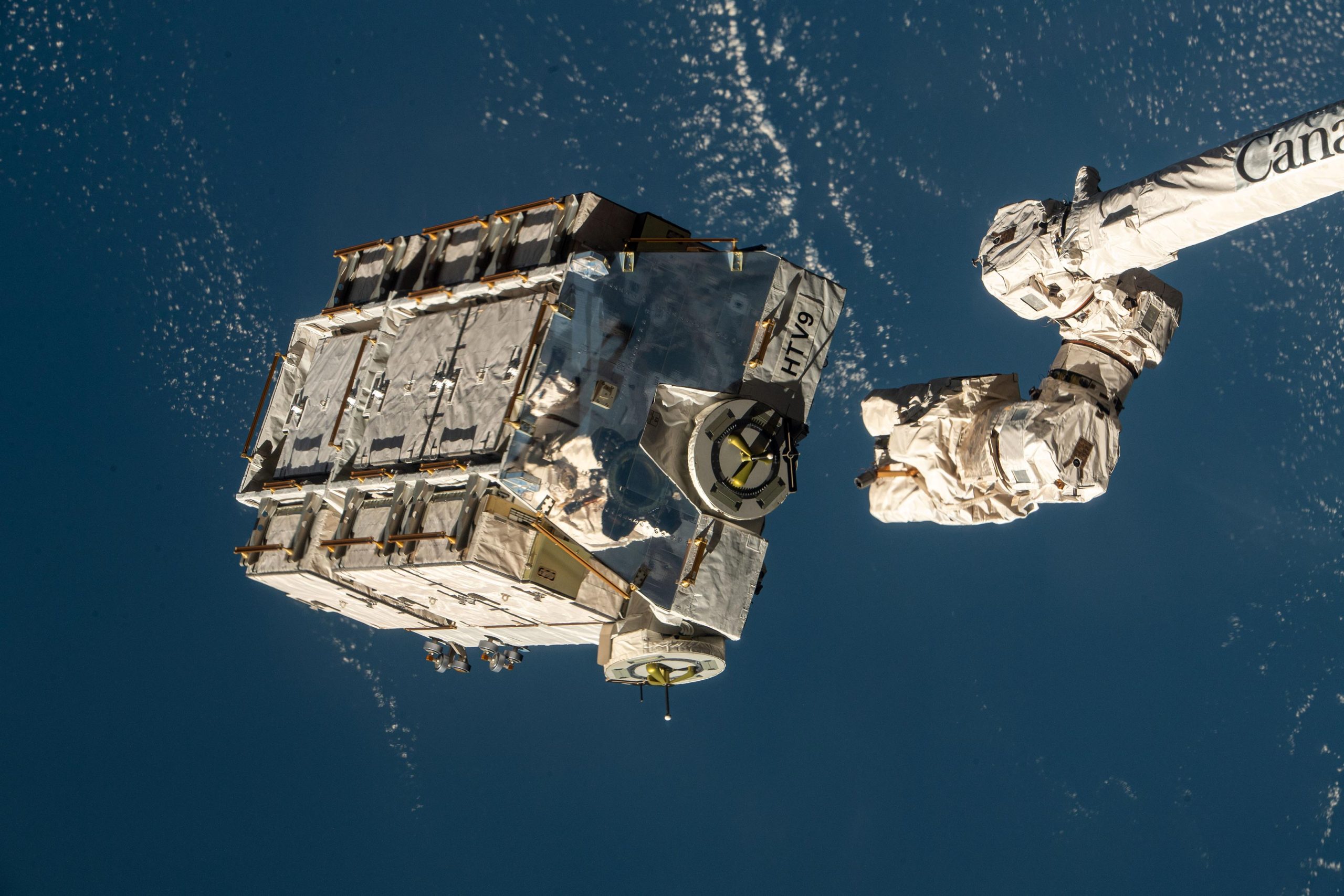Recovered stanchion from the NASA flight support equipment used to mount International Space Station batteries on a cargo pallet. The stanchion survived re-entry through Earth’s atmosphere on March 8, 2024, and impacted a home in Naples, Florida. Credit: NASA
Following the unexpected crash of space debris into a Florida residence, NASA conducted an investigation that identified the debris as discarded battery equipment from the ISS. The agency is now focused on understanding how such incidents can be prevented.
In March 2021, NASA ground controllers used the International Space Station’s robotic arm to release a cargo pallet containing aging nickel hydride batteries from the space station following the delivery and installation of new lithium-ion batteries as part of power upgrades on the orbital outpost. The total mass of the hardware released from space station was about 5,800 pounds.
The hardware was expected to fully burn up during entry through Earth’s atmosphere on March 8, 2024. However, a piece of hardware survived re-entry and impacted a home in Naples, Florida. NASA collected the item in cooperation with the homeowner and analyzed the object at the agency’s Kennedy Space Center in Florida.

An external pallet packed with old nickel-hydrogen batteries is released from the Canadarm2 robotic arm as the International Space Station orbited 260 miles above the Pacific Ocean west of Central America. Mission controllers in Houston commanded the Canadarm2 to release the external pallet into space where it was expected to orbit Earth between two to four years before burning up harmlessly in the atmosphere. The batteries were removed during previous spacewalks and replaced with newer lithium-ion batteries to continue powering the station’s systems. Credit: NASA
As part of the analysis, NASA completed an assessment of the object’s dimensions and features compared to the released hardware and performed a materials analysis. Based on the examination, the agency determined the debris to be a stanchion from the NASA flight support equipment used to mount the batteries on the cargo pallet. The object is made of the metal alloy Inconel, weighs 1.6 pounds, is 4 inches in height and 1.6 inches in diameter.
The International Space Station will perform a detailed investigation of the jettison and re-entry analysis to determine the cause of the debris survival and to update modeling and analysis, as needed. NASA specialists use engineering models to estimate how objects heat up and break apart during atmospheric re-entry. These models require detailed input parameters and are regularly updated when debris is found to have survived atmospheric re-entry to the ground.
NASA remains committed to responsibly operating in low Earth orbit, and mitigating as much risk as possible to protect people on Earth when space hardware must be released.

Dr. Thomas Hughes is a UK-based scientist and science communicator who makes complex topics accessible to readers. His articles explore breakthroughs in various scientific disciplines, from space exploration to cutting-edge research.








